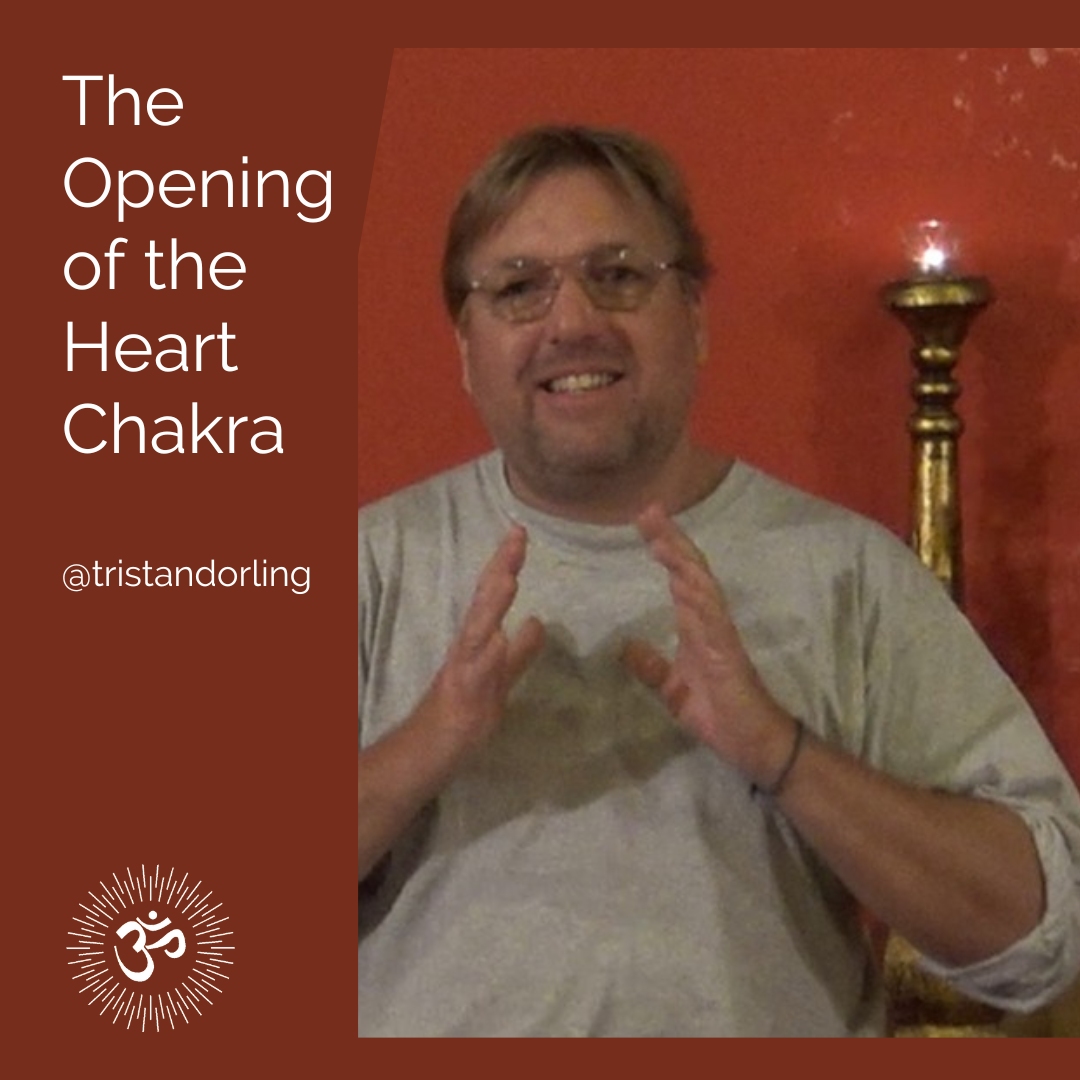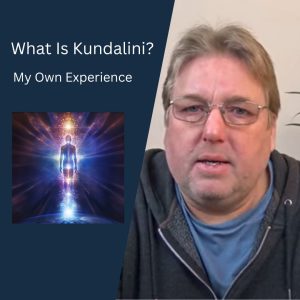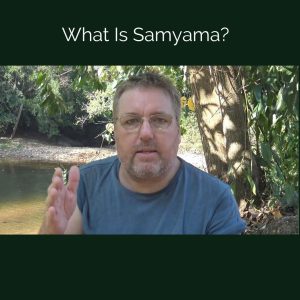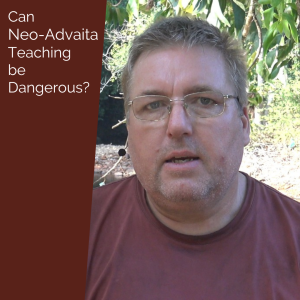This podcast is a clip from a class given on an AYP teacher training course in Andalucia, Spain 2019. Subtitles are available on the video by clicking “CC”.
For translation of subtitles into languages other than English, view the podcast on YouTube here. Turn on Closed Captions (CC) and use the settings button to select the preferred language for the subtitles.
Okay, so moving on up, to anāhata, the heart chakra. So, located in the middle of the chest. Incidentally when I, if I, when I say, the maṇipūra is located here, the heart chakra is located here… actually these things, these chakras, if you imagine the sushumnā nāḍī going up the spine to the third eye, and now you imagine points of light on that energy channel, and then so, imagine a point of light somewhere in the middle of my, well somewhere on my spine, somewhere in my spine about level with here, and then you imagine an energetic cone coming forwards and another one going backwards, yea, so this is what we’re really talking about. So, when we talk about chakras we often talk about them as if they only exist on the front of the body, and that, and the reason we do that is because the, the energetic expansion forwards is a lot stronger than the energetic expansion backwards.
But it is [true that] when you’re going through an awakening experience, sometimes you can feel things on your back, you know, related to these chakras expanding. So, I’ll generally talk about them as if they’re just on the front, but that’s what we’re… And then it’s the same, um, I think it was Devrim talking about the way that the sushumnā nāḍī can begin in the spinal column and then move forwards into the centre of the body. As it moves forwards, the centre of the chakras moves forwards with it. So, the chakras are linked to the spinal nerve. So, Anāhata. Yes, go on.
“When the third eye end point moves from here to here, is that correlating with the movement of the sushumnā forwards?” Yeah, yeah. “So, if that happens I can actually change the path a little according?“
Yeah. So, the third eye generally starts around here, and then as the sushumnā nāḍī moves forward in the body, the sushumnā nāḍī kind of straightens slightly, and the third eye will rise up on the forehead. But you would only change your Spinal Breathing route once you begin to feel the flow of energy in the body. And then once you feel the flow of energy then you’re going to wherever it flows to so, you don’t need to, you know, adjust for any other reason.
Okay so anāhata. So, this is the chakra that’s associated with love. Everyone knows. But, in its closed state it’s actually associated with grief. Grief and despair. It’s not much fun! So, when people are experiencing the heart chakra begin to, beginning to open they can often cry, yeah. If you see people crying in a yoga class, that which happens, you know, quite a lot. Once you get to meditation and prānāyāma, you see people crying in classes, and this is why. The heart chakra is opening. So, the beginning stages, grief and despair, sadness, and then as it opens, Divine love. Okay, Divine love, meaning love for no reason at all. Love without an object we just experience love. So, it’s one of the, uh, one of the more beautiful chakras to experience.
“Can they open and close? Can you talk a bit more about that?”
Yeah, yeah. So, I’m talking about this in very simplistic language, as if it’s like “Dume” open, “Dume” open, but it’s not like that, okay. So, that’s a very simplistic model. What actually happens is we begin to experience… Supposing the heart, okay, so we might begin to experience the heart opening [and] we might find ourselves crying for two days, then we’re laughing for two days, and then we’re crying again, and then we’re laughing again. And then we experience Divine love, and then it’s gone, and then we’re crying. And so you can be
in and out of these, um, of these sates for, for quite a long time.
And different chakras can all be happening simultaneously, you don’t get a… it’s not as easy as just having one to deal with at once, you might have three opening. And so you’ve got, sensitive to everyone else’s energy, this despair, love, you know, you can have all sorts of things happening at the same time. And uh, but there’s a general movement okay, so it’s a general movement towards opening, and towards, um, you know this, you know, you don’t spend the rest of your life crying, you know the crying, the tears will, you know if you go through this process of, of crying, it doesn’t go on forever.
So, eventually you’ll find that each chakra is open most of the time. Most of the time you’re in a state of love, of Divine love. And so there’s a general movement towards, [a] kind of flowering, towards, blossoming. But, in terms of time scale we’re talking years, you know, we’re talking years for chakras to open, to purify, to blossom fully.
“So, this happens when kundalini starts to rise, is that right?”
Yeah. “But what about the way people are feeling before it starts to rise, because people still go through…?”
Yeah people can still have ups and downs. So, essentially…
“Can you repeat that?”
Yeah, so the question she was asking is, um, if this process that I’m talking about is brought about by kuṇḍalinī rising up through the body and opening the chakras, then what about people before kuṇḍalinī awakens? Because, they still feel grief and love and, and, whatever. So essentially, human beings, if we talk about before awakening, before energetic awakening, human beings have a certain amount of prāṇa in their body. And that prāṇa is flowing around the body, kind of circulating. It’s pretty low level, it’s a kind of low level current of prāṇa, and it keeps the body functioning.
Generally the chakras will be in a closed state. For most people the chakras are closed. So, people still have feelings, they have experiences, they can feel things, but the feelings are actually quite limited, you know, the range of feeling that most people actually experience is quite limited. And, um, and their sensitivity is limited. The degree to which people are sensitive to others around them is quite limited. The degree to which people can experience things like Divine love is very limited. So, you have a limited level of functioning. Once kuṇḍalinī awakens, the prāṇa begins to flow up, everything begins to open and expand, the actual range of of our emotions expands massively what we can actually feel, what we’re capable of feeling. And we become capable of experiencing things that we can never experience before. So, most people in the world simply are not sensitive to someone else’s energy, someone else’s emotions, you know. If someone else was in the room, behind them, and they were experiencing an emotion, they wouldn’t know. So, that’s something that we develop, as kuṇḍalinī awakens. Most people are not capable of experiencing Divine love, until their heart opens. So, and when the heart opens, you don’t, you know it, you’re just experiencing Divine
love.
“Can you say a few more words about Divine love, like, what, what is the definition of Divine love?”
The definition of divine love? So, actually it’s, um, it’s a, it’s not just one thing, it’s actually a range of, of conditions. But in it’s, in terms of what we’re talking about here, in terms of the heart opening, Divine love is simply when we love, we love everything and everyone in the universe, and for no reason at all, simply as it is. There’s no conditions, so you could also call it “unconditional love”. It’s not like “I love you”. Generally love in the world is a, is a bit of a sticky, a sticky word. Generally we love someone as long as they love us back. And there’s, it can be a bit of an exchange thing going on. We love someone as long as they behave in the right way, but as soon as they behave in a way that we don’t like, we stop loving them. It’s like, you know, so that’s conditional love, it’s love based on certain conditions. If people behave in the right way, we’ll love them. Unconditional love, you just love, you know, you love everybody. And uh, and so this is something that happens as the heart opens you experience this this kind of love. And uh, and there are deeper aspects of this as well that come. The more we bring our mind into silence the deeper the love becomes.
“Would you say that means you love everybody equally?”
Yeah, yeah. There’s a, the love doesn’t differentiate between one person and another person. It’s not like, I love you more than this person. It’s loving everyone equally.
“Is there any direction at all, or is there just love? Maybe outpouring as it’s called in AYP, but yeah, love, just, for no reason?” Yeah. “Not directed to anything, just love?“
Yeah, just love for no reason. And that doesn’t mean that we don’t still have different relationships with different people, yeah. So, as personalities we still have different relationships with different people, you know. So, if you’re a father, you love your children, your relationship with your children is different from your relationship with, somebody else, like the person who works in the, in the shop down the road. So, we still have personalities and we still have relationships with different people and those different relationships have different dynamics. But, in terms of love, in terms of just purely loving someone for who they are that’s, that doesn’t differentiate, between different people. And it’s a, it’s a difficult, difficult thing to imagine, because we don’t normally function like that in the world. It sounds like, it sounds like it could be quite overwhelming, and it is, when it first happens. It’s quite an overwhelming experience. And uh, it takes a bit of getting used to.
“I remember the last time I was in India, I think I had, you know, sort of a bit of that experience, and it is almost kind of like, how can you live?” Like this? “With that. Yeah, it’s almost you sort of like saying it’s, you know, it’s so intense that you sort of think it’s not possible to, you know.” To function in the world? “Yeah“
Yeah, yeah. And yea, you can feel very, when this first happens you can feel very vulnerable, you can feel very open. You’ll sometimes see people, if you go to ashrams in India, there’s people walking around with their hand on their heart, like that, all the time. And, uh, that happens because their heart’s opening, but they feel, it feels too intense, feels too intense to love everybody, so they’re trying to sort of contain their, their love a bit, by putting their hand on their heart. And, but, you can just trust. You have to just trust that you’ll be all right. You can, you can love everybody, and you’ll be all right.
Another, you know, going back to the, the opening and closing, it’s not like it just opens, and it’s, that’s it. You get a taste of Divine love, and then it’ll close for a while, and [then] you get another taste. But, it’s a very beautiful way of being in the world. It’s a very beautiful uh, way of existing. And so some people refer to the heart as the
first of the spiritual, the first of the truly spiritual chakras for this reason. Which, we’re kind of, you know, moving up from the first three to do with creativity, sexual functioning, lower emotions, and then we’re coming into Divine love. It’s, it’s only a movement from here to here. It’s not that far. It’s quite nice not to have too far to go.
One of the things that can happen is that someone’s heart can open before their kuṇḍalinī awakens. This is, so, it can be triggered by something, um, it’s actually something like falling in love. You know, someone has an experience of falling in love with somebody else, that opens their heart chakra, and then the kuṇḍalinī can awaken because of that because when this chakras open, it causes the prana to rise up towards the heart. So, falling in love can actually be one of the triggers for, um, kuṇḍalinī awakening.




